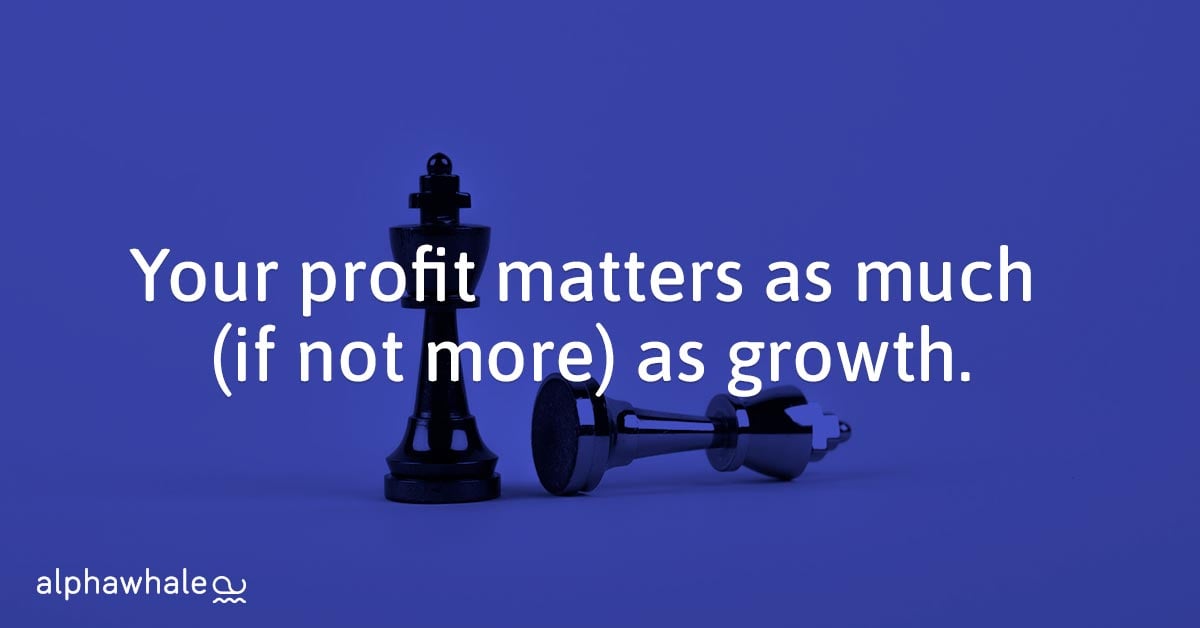The number one focus for many marketers is to grow their business through customer acquisition.
But when choosing the right acquisition channels, your options come in droves - social media, email, retargeting, landing pages, PPC… it goes on.
Some businesses try to get involved or pay-to-play across all of these channels in order to acquire first-time customers, which is generally a time and money waster.
The fact is, acquiring new customers can cost five times as much as retaining current customers.

This suggests two things. High acquisition costs can indicate an imbalance in the business model if retention isn't given equal focus. It can also suggest money wastage; focusing on the wrong channels with the wrong messages and as a result, inefficient allocation of budget or poor ROI.
By having a plan in place, you can bring that acquisition cost down and build an evergreen acquisition strategy to drive all future growth of your business. Your strategy should be 4 things: data-driven, profitable, sustainable and targeted.
Use these tips to start improving your acquisition strategy today:
1. Be data-driven: figure out your Customer Acquisition Cost (CAC) across different channels.
Your CAC is the amount you’re spending to acquire a single customer..jpg?width=600&name=cac2%20(2).jpg)
Finding this out is the single most important preliminary step you can take; without knowing your CAC, there’ll be no real way for you or your team to measure the ROI of your current marketing strategy (which means you may as well not have one).
Once you have that, look at the ratio of what your customer’s lifetime value (LTV) is compared to what you’re spending to acquire them.
.jpg?width=479&name=ltv-cac2%20(1).jpg)
An ideal LTV:CAC ratio is 3:1. That means that for every $1 you spend acquiring a customer, they will spend at least $3 with your business over their lifetime. If your current CAC significantly varies from that, you may be spending too much or too little. Read more about calculating your LTC:CAC ratio here.
The next priority should be working out your average cost per acquisition specific to each of your different marketing channels, as they are all likely to yield different results.
When you have those, see how each measures up to the 3:1 benchmark. This will tell you exactly where to focus on moving forward, what channels you should be optimising and even what you should be getting rid of completely.
Not sure where to start? Check out this post on the ways to calculate your Customer Acquisition Cost.
2. Make your strategy profitable: Your profit matters as much (if not more) as growth.
“For a viable business, the value of the customer must exceed the cost of acquiring that customer.
– Brian Kotlyar, Director of Demand Generation, Intercom.”
You might have a channel that’s attracting new sign-ups by the bucketload, but if those customers have very little lifetime value then the profitability issue remains.
Some marketers might be thinking, “I can acquire new customers on a loss - I just need volume! Isn’t that the same approach taken by successful giants like Amazon?”
Well…unless you have capital coming out of your ears, such a strategy simply isn’t going to work for your business.

It’s tempting to splurge on acquisition just to get customers through the door, but how likely is that first-time customer going to make a second or third purchase that could lead to profit for your business?
How confident are you that first-time customers will continue purchasing from you?
Think about what you’re really gaining when you get a first-time customer; a potential promoter of your brand and someone with a high lifetime value. These customers keep your business healthy, and profit is the key indicator of that.
So to have the best shot at profitability, treat user growth as quality over quantity. Your acquisition strategy should be completely focused on the places/messages that truly matter to your ideal first-time customer, rather than the aggressive, expensive, omnipresent approach.
3. Make your strategy sustainable: give it longevity.
Here’s an example of what we mean: flash sales are a billion-dollar business and can attract a record amount of site traffic, new customers and transactions.
They can also be a billion-dollar mistake when all those shiny new customers desert your brand as soon as the sale ends.
We’re not saying you should lay off the sales/deep discounts entirely - but temporary fixes like these shouldn’t be core to your acquisition strategy.
"Once you train your customers and prospects to expect a discount, they won't buy without it." - Derek Halpern, Social Triggers
If your acquisition model is based on price incentive alone, then you’re not communicating all of the other benefits that customers could experience with your brand… which means you’re not making your value proposition sustainable.
So how do you make your acquisition strategy sustainable?
There are a few options, but we’ll take a page from Neil Patel here: try content marketing. One of the reasons content marketing works well is because quality content delivers real, tangible benefits to your users (as well as your SEO). It creates sustainable website traffic and leads over time - it doesn’t expire like a campaign or advertisement set would.
The best part is, evergreen content doesn’t need to be constantly updated. If you invest in a few quality blogs or eBooks that have enduring value, they can give you fantastic long-term ROI with minimal upkeep.
4. Your strategy should be targeted to your ideal customers.
Let’s be realistic: not everyone is going to be your customer, and not every customer is going to be your ideal customer.
Your ideal customers are those with a high lifetime value (LTV) and will surpass their acquisition cost over time. However, you need to know how to engage them before anything else - and you do that by striking a chord with their values.
Take this as an example. The top brand traits that today’s consumers look for include (but aren’t limited to):
- Brands that allow them to express their values
- Brands that seem more human
- Brands that foster communities
Essentially, your would-be customers are looking for an experience with your brand that resonates with their values, not just a product or service.
The best way to instil that in your acquisition strategy is by crafting well-researched buyer personas.
Buyer personas act as a compass to navigate through your ideal customer’s thoughts, challenges and pain points.
This enables you to understand what’s best for them, what they might love about your product or service, and how your marketing can effectively communicate all of those benefits to bring them on board.
Only by having buyer personas can you expect to see real returns on your customer acquisition strategy - so don’t be afraid of spending time and a little budget on persona research. It’ll go a very long way for your business!
Curious? Furious? Intrigued? We’re always happy to share our knowledge of digital marketing and have a chat about your business. Come on over, we’ll have coffee.





